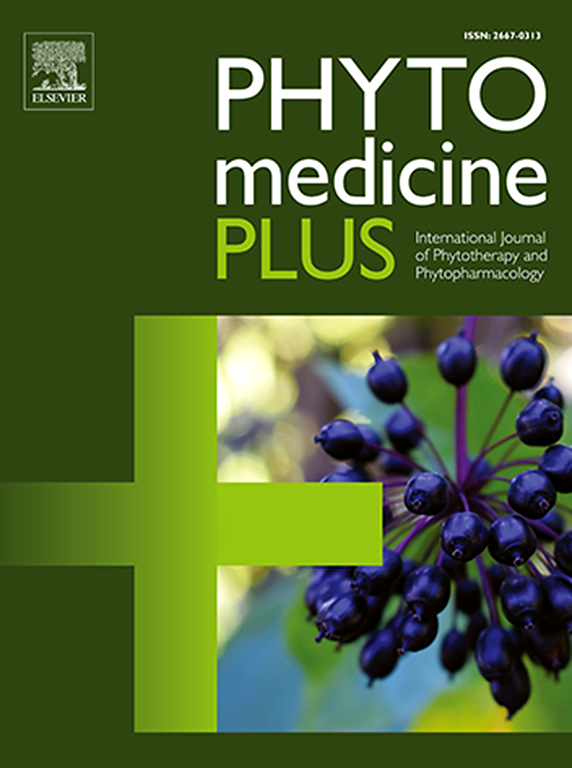Comparative efficacy of Sat-i Gilo and metformin hydrochloride in the management of Type 2 diabetes mellitus: a randomized controlled trial
Q3 Pharmacology, Toxicology and Pharmaceutics
引用次数: 0
Abstract
Introduction
Type 2 Diabetes Mellitus (T2DM) is a global health concern with rising prevalence and significant morbidity and mortality due to associated microvascular and macrovascular complications. Unani medicine offers a rich repository of natural remedies for metabolic disorders, with Sat-i-Gilo (a traditional aqueous extract of Tinospora cordifolia) being a prominent example known for its antihyperglycemic, antioxidant, and immunomodulatory properties. The aim of this study was to compare the efficacy of Sat-i Gilo with metformin hydrochloride in managing T2DM.
Methods
In this open-label randomized controlled trial, 40 participants with T2DM successfully completed the study duration. The intervention group received Sat-i Gilo 1g twice daily for 3 months, and the control group received metformin hydrochloride 500 mg twice daily for the same duration. Primary outcome measures included changes in hemoglobin A1C (HbA1c) and estimated average glucose (eAG) levels, measured before and after treatment. Secondary outcomes comprised changes in fasting blood sugar (FBS) and postprandial blood sugar (PPBS), assessed at baseline and at every second follow-up visit. Additionally, diabetes-specific quality of life was evaluated using the diabetes quality of life (DQoL) questionnaire at baseline and post-treatment.
Results
The trial results showed a mean difference of −0.22 (95 %CI: −0.52, 0.08, p = 0.154, d = 0.45) in HbA1c levels and −6.23 (95 %CI: −14.81, 2.35, p = 0.150, d = 0.47) in eAG levels between the intervention and control groups at the end of the study.
Conclusion
The findings of this study suggest that Sat-i Gilo may provide beneficial effects in the management of T2DM. While no statistically significant difference was observed between Sat-i Gilo and metformin in terms of glycemic outcomes, these results support the possibility of comparable efficacy under the conditions of this study. Further large-scale, rigorously designed clinical trials are recommended to validate these findings and to explore the long-term effectiveness and safety of Sat-i Gilo.
沙特吉洛与盐酸二甲双胍治疗2型糖尿病的比较疗效:一项随机对照试验
2型糖尿病(T2DM)是一个全球性的健康问题,由于相关的微血管和大血管并发症,其发病率和死亡率不断上升。Unani医学为代谢紊乱提供了丰富的自然疗法,其中Sat-i-Gilo (Tinospora cordifolia的传统水提取物)以其抗高血糖、抗氧化和免疫调节特性而闻名。本研究的目的是比较赛特吉洛与盐酸二甲双胍治疗T2DM的疗效。方法在这项开放标签随机对照试验中,40名T2DM患者成功完成了研究。干预组给予赛特-吉洛1g,每日2次,疗程为3个月;对照组给予盐酸二甲双胍500mg,每日2次,疗程相同。主要结局指标包括治疗前后血红蛋白A1C (HbA1c)和估计平均葡萄糖(eAG)水平的变化。次要结果包括空腹血糖(FBS)和餐后血糖(PPBS)的变化,在基线和每二次随访时进行评估。此外,在基线和治疗后使用糖尿病生活质量(DQoL)问卷评估糖尿病特异性生活质量。结果研究结束时,干预组与对照组HbA1c水平的平均差异为- 0.22 (95% CI: - 0.52, 0.08, p = 0.154, d = 0.45), eAG水平的平均差异为- 6.23 (95% CI: - 14.81, 2.35, p = 0.150, d = 0.47)。结论本研究结果提示赛特-吉洛可能对T2DM的治疗有有益的作用。虽然在血糖结果方面,Sat-i Gilo和二甲双胍之间没有统计学上的显著差异,但这些结果支持在本研究条件下具有可比疗效的可能性。建议进一步进行大规模、严格设计的临床试验,以验证这些发现,并探索at-i - Gilo的长期有效性和安全性。
本文章由计算机程序翻译,如有差异,请以英文原文为准。
求助全文
约1分钟内获得全文
求助全文
来源期刊

Phytomedicine Plus
Medicine-Complementary and Alternative Medicine
CiteScore
3.70
自引率
0.00%
发文量
178
审稿时长
81 days
期刊介绍:
 求助内容:
求助内容: 应助结果提醒方式:
应助结果提醒方式:


